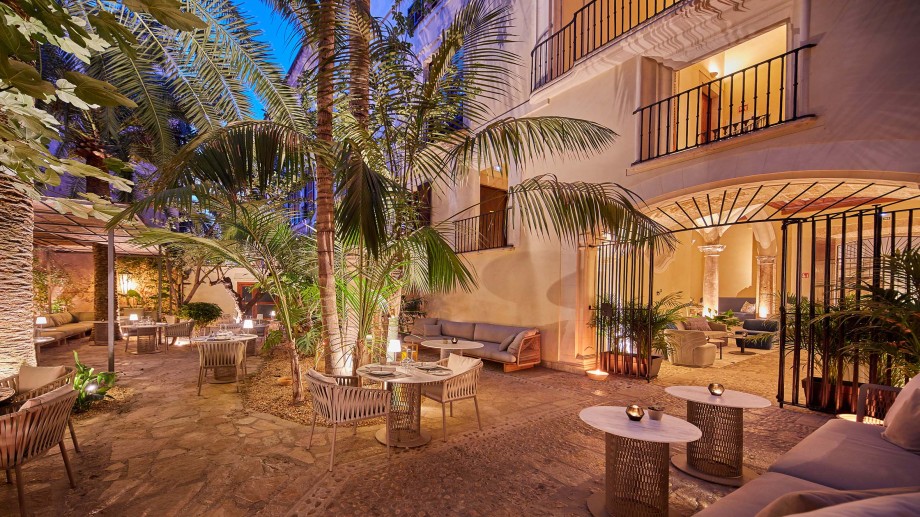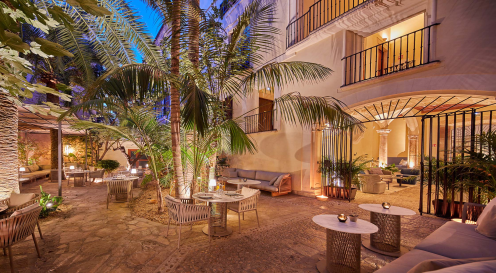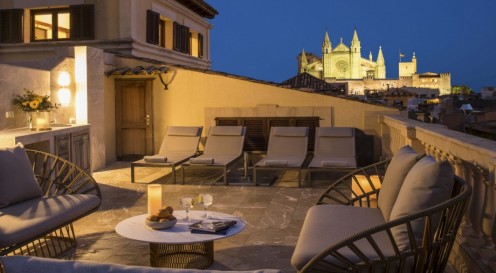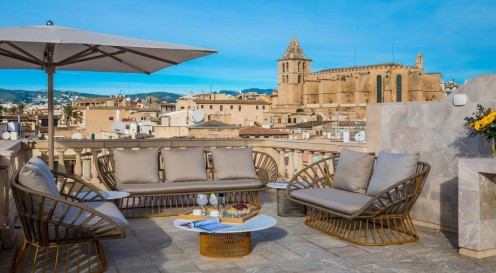Literary tour of Palma with the Palacio Can Marqués Hotel
- PALMA DE MALLORCA
- PALACIO CAN MARQUÉS

Literary tour of Palma: in the footsteps of writers and artists
Palma de Mallorca is more than just sea, palm trees and beaches. It is a city that breathes history, literature and art in every passageway, courtyard and square. For those who love books and paintbrushes, strolling through Palma’s Old Town can feel like leafing through a living manuscript. This literary tour explores emblematic locations that inspired writers and artists, connecting heritage, words and images.
First stop: the Museu de Mallorca and its vestiges
We begin at the Museu de Mallorca (also called the Mallorca Museum), located in the Casa de la Gran Cristiana, at Calle Portella nº 5, in the heart of Palma’s historic centre.
This 16th-century palace features collections that trace the island’s history from prehistory through the Roman era, the Islamic period, the Gothic period, to Modernism and contemporary exhibits.
Why start here? Because this museum provides an understanding of the physical and cultural setting that surrounded many Mallorcan authors, including Islamic remnants, monasteries, churches, and palaces. Places that inspired writers who ruminated about identity, language and memory.
Its collections also include everyday objects, photographs, old books and documents that place visitors in contexts that would later come to life in local novels, essays and poetry.
Doves and feathers: from Ramón Llull to medieval literary Mallorca
No literary tour of Palma would be complete without Ramon Llull. Born in 1232 in what is now known as Palma, Llull was a philosopher, theologian, poet, missionary, and writer in Catalan, Latin, and Arabic.
In the Plaça Major, you’ll find a plaque marking the traditional site of his birthplace.
● The route includes places such as churches like Santa Eulàlia (one of the first Christian parishes after the Muslim conquest) and the Monastery of Miramar.
● The route also includes the Basilica of Sant Francesc, where his remains lie. These spaces exude an atmosphere that transcends history, allowing visitors to experience a Palma where words and devotion, faith and reason intersect. Walking through these areas evokes the ancient Palma of the 13th century, complete with its walls, monasteries and rich cultural diversity.
Centuries closer: artists, modernists and contemporary voices
After the Middle Ages, Palma remained a magnet for creators. Here are some interesting landmarks:
● The Fundació Pilar i Joan Miró, located in Cala Major, close to Palma city centre, preserves the artist’s workshops, artwork and study space. It is a unique place to understand how Miró lived, thought and created on the island.
● Es Baluard Museu d’Art Contemporani, situated in the heart of the ancient city walls, houses a modern and contemporary collection featuring local and international artists, avant-garde movements and a renewal of the pictorial landscape.
It is easy to imagine how these spaces, with sea views and Mediterranean light, were an inspiration for visual artists, as well as writers who engage with colour, form and visual memory.
Passageways, squares and corners: a reading city
Beyond the museums, Palma itself is an open book:
● The Jewish quarter, with its narrow streets behind the Cathedral, invites you to stop and experience the essence of the old city. Authors like Albert Camus wandered through the cloister of Sant Francesc, exploring these charming corners.
● The Cathedral of Mallorca (‘La Seu’), which Borges admired and which appears in poems and texts dedicated to Mediterranean Gothic architecture.
● Can Alcover, the birthplace of the poet Joan Alcover, on Sant Alonso Street, is another key spot for those who love Mallorcan literature.
Lastly, Plaça Major is significant not only because it was the location of Llull’s house, but also because it serves as a space where the public and private realms intersect. It hosts markets, social gatherings, and street encounters, creating an urban environment where words transform into conversation.
Suggested itinerary
For those who want to experience this route at a leisurely pace, here is a recommended itinerary:
1. Start at the Museu de Mallorca to provide historical context.
2. Walk towards the Cathedral, pass by Sant Francesc, and stop in the Jewish quarter.
3. Take the bus or taxi to Cala Major to visit the Fundació Miró.
4. Return to the historic centre, visit Can Alcover and the old squares.
5. Finish at Plaça Major, where Ramón Llull is commemorated, and observe the urban ambience.
The perfect ending: Palacio Can Marqués and a glass of wine
To finish this cultural tour, I made a special stop at the Palacio Can Marqués. This monumental building in Palma, in the neoclassical style, features a beautiful central courtyard that offers a unique ambience: a blend of history, sobriety, elegance, and serenity.
Imagine sitting in a courtyard under an open sky, surrounded by ancient columns, lush vegetation, soft light, and delicate shadows. After walking through centuries of literature and art, take a moment to savour a glass of wine and let the words of Llull, Miró, Borges, and Alcover resonate within you.
Combining historic heritage with literary charm involves more than just visiting museums or reading ancient tablets; it’s about immersing yourself in the quiet moments between two walls, observing the light reflecting off the stone, and feeling the city speak to you. In that space, with wine, words and palm trees as witnesses, literature becomes a profound experience.
If you desire, this route can become your own experience: let Palma whisper its verses and brushstrokes to you, and save that final moment in the Palacio Can Marqués as the finishing touch to a day where literature was not only read, but lived.
FAQs
When is the best time to do this literary tour?
Ideally, between late spring and early autumn (May to June, September), to avoid the intense summer heat. The afternoons and early mornings offer soft light that is ideal for landscape reading and visiting museums.
What level of literary knowledge is required to enjoy thr tour?
None in particular. All you need is curiosity, a love for places rich in history, and a desire for a slow walk—taking the time to stop and observe an inscription, a façade, or a stone bench. While knowing a bit about the authors involved can enhance the experience, you can also enjoy it as a cultural and aesthetic stroll.







